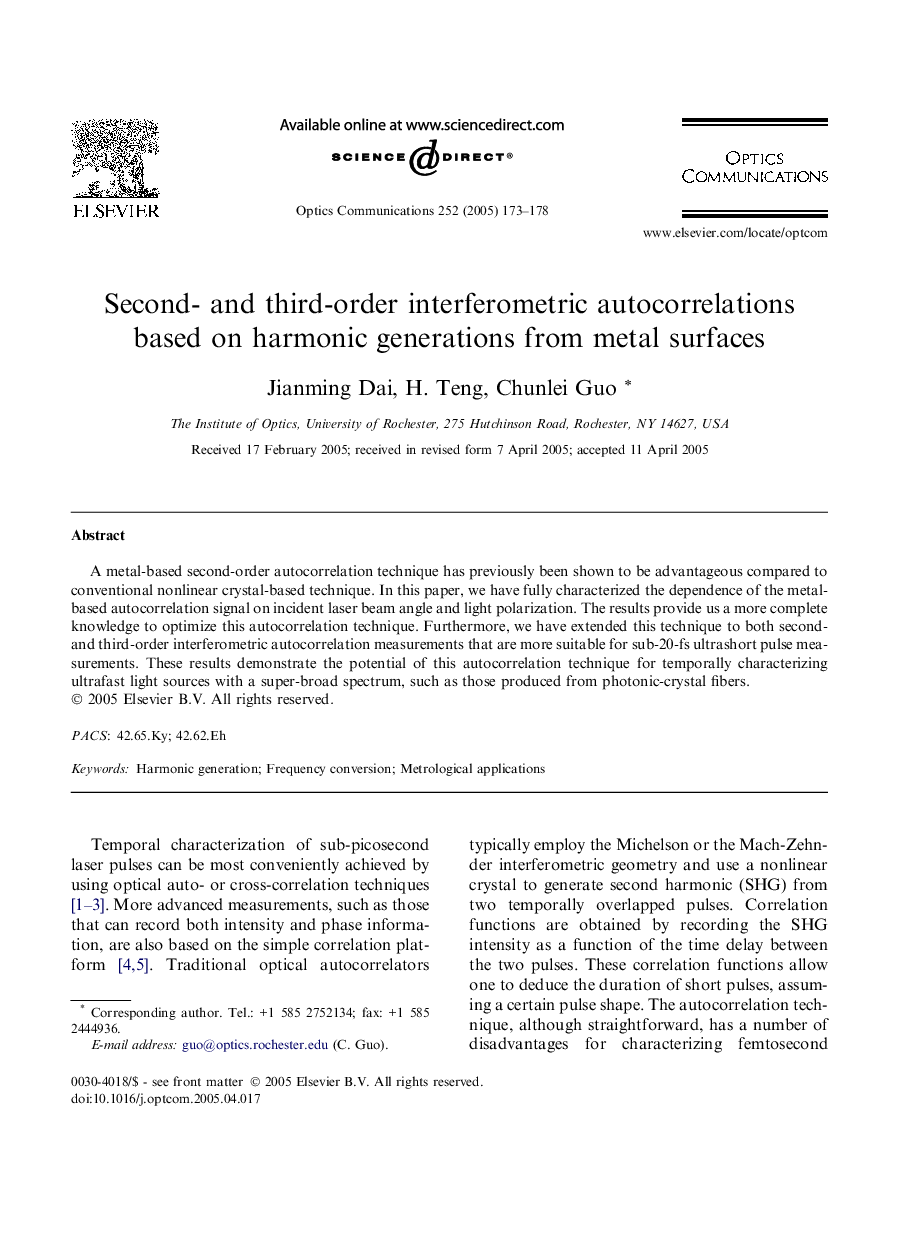| Article ID | Journal | Published Year | Pages | File Type |
|---|---|---|---|---|
| 9785751 | Optics Communications | 2005 | 6 Pages |
Abstract
A metal-based second-order autocorrelation technique has previously been shown to be advantageous compared to conventional nonlinear crystal-based technique. In this paper, we have fully characterized the dependence of the metal-based autocorrelation signal on incident laser beam angle and light polarization. The results provide us a more complete knowledge to optimize this autocorrelation technique. Furthermore, we have extended this technique to both second-and third-order interferometric autocorrelation measurements that are more suitable for sub-20-fs ultrashort pulse measurements. These results demonstrate the potential of this autocorrelation technique for temporally characterizing ultrafast light sources with a super-broad spectrum, such as those produced from photonic-crystal fibers.
Related Topics
Physical Sciences and Engineering
Materials Science
Electronic, Optical and Magnetic Materials
Authors
Jianming Dai, H. Teng, Chunlei Guo,
